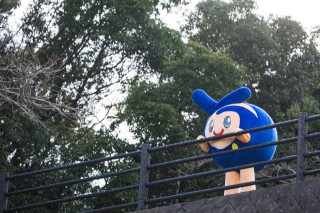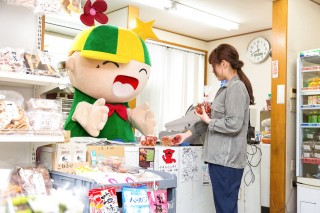Loading
Search
▼ Japanese Mascots Endangered By Effects Of Coronavirus
- Category:Other
TOKYO - Yuru-kyara, the costumed mascots of Japan, have long entertained crowds big and small, whether its the opening of a car-wash or setting world records. The mascot industry has launched superstar careers and captured the imagination of the world.
But now, it is in danger. For the vast majority of yuru-kyara, income relies solely on public appearances at events like festivals, which have been almost unanimously called off due to coronavirus concerns. This does not bode well for the tens of thousands of big-headed fabric creatures across Japan.
To find out just how hard times have become, News Post Seven spoke with 44-year-old Akihiko Inuyama, the “inside person” (naka no hito) for Tokyo-based mascots Togoshi Ginjiro and Ohsaki Ichibantaro.
Inuyama explains that being a mascot during these times is a paradoxical situation. On one hand, the large heads of yuru-kyara are perfect at blocking airborne particles and distancing with other humans. However, mascots only appear in places where crowds gather, and with multiple children wanting to touch and hug them the danger that mascots’ fans pose to each other is heightened.
Spring and summer is the peak time for a mascot to get work and the fee for appearances depends on the notoriety of the character. In the case of Inuyama’s suits, he could expect to earn between zero and 5,000 yen but in some cases can get jobs for up to 30,000 yen.
And because Inuyama isn’t officially affiliated with a government, he has to rely on onsite merchandise sales for the bulk of his yuru-kyara income. Funasshi is said to be the only unaffiliated mascot who can make a living solely on yuru-kyara work, while every other inside person can only indulge it as a side job.
Same goes for Inuyama, whose yuru-kyara income has been reduced to zero. He also works as a writer, but in the overall economic situation that work has shrunk considerably as well. “I applied for government support,” he tells News Post Seven, “I received the full amount of one million yen, and that has helped me so far, but I will have to seriously reconsider continuing in the future.”
Like many mascots, Inuyama is inherently civic-minded and continues to volunteer in his local community by helping to make posters offering coronavirus prevention advice.
He also is trying to branch out as a YouTuber, but this is inherently difficult for any yuru-kyara as a vast majority of them do not speak. Not only that, but they must invest in production and editing first, and only then can they struggle to generate enough views and subscribers before they can see a single yen from their efforts.
▼ Inuyama has tried to get around this hurdle by creating a VTuber called Ohsaki Nisebantaro, seen here with Ohsaki Ichibantaro.
https://youtu.be/ULY9Hqm2qhU
Although it’s still too early to say with confidence, Japan appears to be easing into the post-COVID-19 phase as businesses slowly open back up to full capacity. However, a yuru-kyara promotion is still a bridge too far for most businesses, as it expresses a clear desire for people to congregate and may reflect poorly on them.
This means that it will be quite some time before significant work returns for these giant pieces of deformed sushi and Buddhas with deer antlers. It might not even happen this year, and this may very well lead to a mass extinction event for these colorful characters as their inside people give up to pursue a living elsewhere.
So please, try to find your favorite mascot on YouTube if you can, and click those like and subscribe buttons to help them weather this storm. The ecosystem of whimsy in Japan is fragile as it is, and a large enough drop in the yuru-kyara population could have devastating repercussions to the country as a whole.
Like many mascots, Inuyama is inherently civic-minded and continues to volunteer in his local community by helping to make posters offering coronavirus prevention advice.
He also is trying to branch out as a YouTuber, but this is inherently difficult for any yuru-kyara as a vast majority of them do not speak. Not only that, but they must invest in production and editing first, and only then can they struggle to generate enough views and subscribers before they can see a single yen from their efforts.
▼ Inuyama has tried to get around this hurdle by creating a VTuber called Ohsaki Nisebantaro, seen here with Ohsaki Ichibantaro.
https://youtu.be/ULY9Hqm2qhU
Although it’s still too early to say with confidence, Japan appears to be easing into the post-COVID-19 phase as businesses slowly open back up to full capacity. However, a yuru-kyara promotion is still a bridge too far for most businesses, as it expresses a clear desire for people to congregate and may reflect poorly on them.
This means that it will be quite some time before significant work returns for these giant pieces of deformed sushi and Buddhas with deer antlers. It might not even happen this year, and this may very well lead to a mass extinction event for these colorful characters as their inside people give up to pursue a living elsewhere.
So please, try to find your favorite mascot on YouTube if you can, and click those like and subscribe buttons to help them weather this storm. The ecosystem of whimsy in Japan is fragile as it is, and a large enough drop in the yuru-kyara population could have devastating repercussions to the country as a whole.
- June 15, 2020
- Comment (0)
- Trackback(0)



